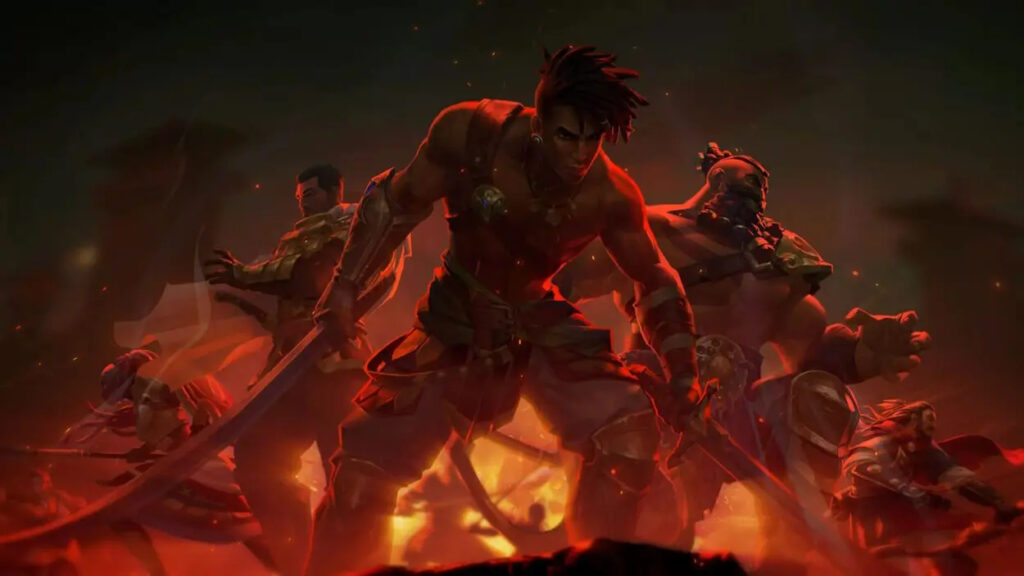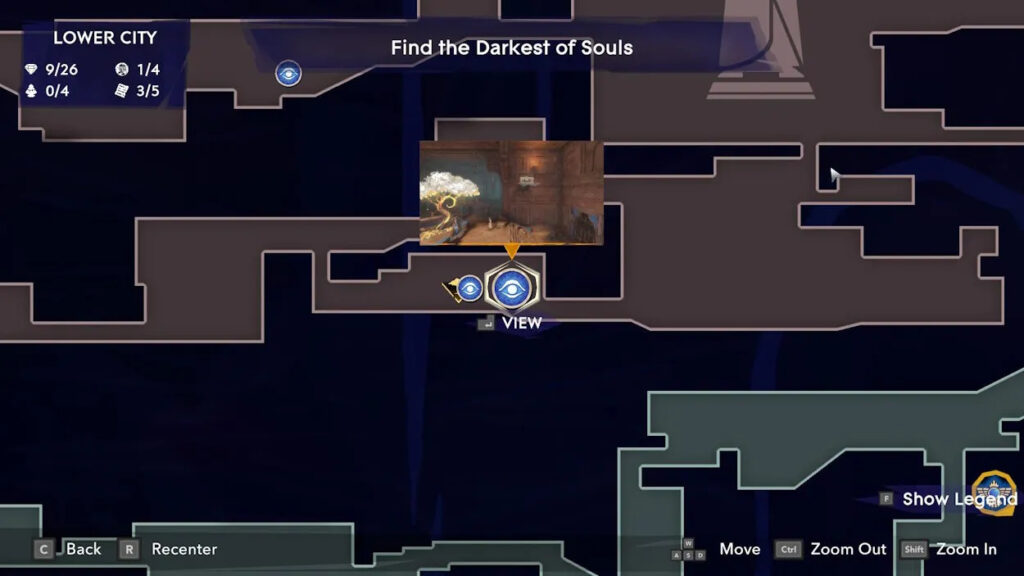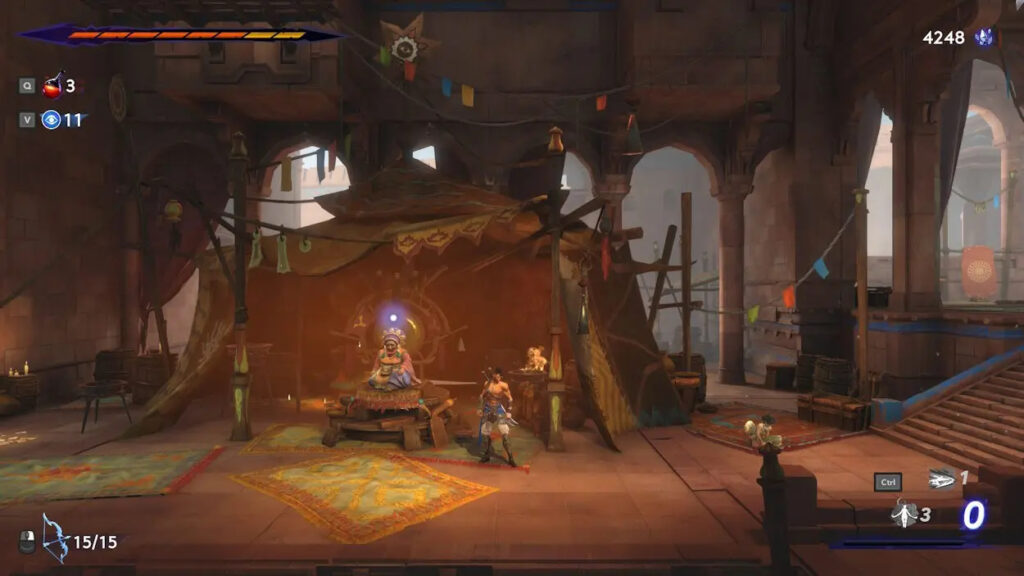
The new year has ushered in long-awaited games, and among them is Prince of Persia: The Lost Crown, a remake that rekindles my childhood fondness. Ubisoft’s fresh perspective has revitalized the entire series, resulting in one of their most successful launches this fiscal year. Despite its modest budget, Lost Crown introduces numerous innovations, particularly enhancing the Metroidvania genre.
Thanks to an early copy from Ubisoft, I’ve immersed myself in the captivating world of Prince of Persia: The Lost Crown, and I’m excited to share my thoughts on the game.
The Immortals Stand Together
Prince of Persia: The Lost Crown unfolds in the classic Prince of Persia universe, introducing new characters instead of revisiting familiar ones. Players take on the role of Sargon, a member of the Immortals, an elite group of warriors endowed with mystical powers.
When Ghassan, the Prince of the Persian empire, is abducted, the responsibility of rescuing him and bringing him home falls upon Sargon and the Immortals. Their quest leads them through the mystical Mount Qaf, the dwelling place of the time god Simurgh.
In typical Prince of Persia fashion, time doesn’t adhere to its normal flow in this setting. Trapped during the prince’s rescue mission, Sargon finds himself entangled in the mysterious happenings within Mount Qaf. Determined to comprehend the unfolding events, he embarks on a journey through the mountain.

Ubisoft has invested significant thought and effort into the narrative, acknowledging that, given its Metroidvania structure, it might be overlooked. Nonetheless, there are mechanisms in place to ensure players can savor the main elements of the game without feeling disoriented.
To complement the storyline, world-building is achieved through lore collectibles, enhancing the exploration aspect. However, their inclusion is optional. Unless you’re determined to grasp the entire background of the game, finding them is not obligatory.
Additionally, the game features in-game side-quests that substantially enrich the game universe. Therefore, I recommend engaging in exploration, as these quests contribute significantly to the overall gameplay experience. I thoroughly enjoyed them, and I’m confident you will too.

After investing around 18 hours into the game, it’s evident that sincere efforts have been made to craft an original storyline. While it may not capture the full essence of the Sands of Time trilogy, it comes remarkably close. Sargon and his group of allies emerge as compelling characters, infusing a commendable amount of vitality. The inclusion of bosses in the Prince of Persia remake adds a enjoyable dimension, providing challenges that keep the experience engaging.
However, a notable concern persists. Sargon and the supporting characters lack the captivating aura inherent in the Sands of Time trilogy. This deficiency extends not only to the other characters but also to the adversaries.
Consequently, if tasked with identifying a singular enemy or character, aside from Sargon, in the coming years, I would find it challenging. This encapsulates my sole significant qualm with Lost Crown.
Fortunately, Prince of Persia doesn’t aspire to replicate that essence. Its objectives and motivations diverge, and it successfully achieves what it sets out to be.
Venture The Metroidvania Mount Qaf
An immediate standout during gameplay was the well-crafted loop. As a Metroidvania, Prince of Persia: The Lost Crown draws clear inspiration from established titles like Blasphemous, Hollow Knight, and Castlevania while infusing its unique perspective on the series. I’m delighted to affirm that the execution is commendable.
Notably, this stands out as perhaps the most user-friendly Metroidvania to date. Ubisoft has thoughtfully addressed the player’s preferences, offering the flexibility for those seeking either a classic approach or a more guided experience. The game presents the choice between a guided or old-school playthrough, catering to diverse preferences.
This choice proved to be a literal game-changer, completely transforming my experience with Metroidvanias, especially on more relaxed days. Yet, its impact extends beyond that.


Throughout your journey, you encounter puzzles and locations that unlock gradually. To aid in recollection, the game introduces the use of memories. With limited access, activating a memory creates a screenshot on the map of that specific area. This innovative approach, unprecedented in Metroidvanias, is truly trendsetting. Its applicability to other games is noteworthy, and I can’t emphasize enough how seamlessly it complements a game of this nature.
The commitment to accessibility extends to difficulty, offering complete customization. Everything, from enemy damage to environmental impact, is adjustable. While the standard four difficulty options are available, the custom difficulty feature has become a personal favorite. I’ve fine-tuned my settings to make enemies more forgiving while maintaining the challenge of environmental hazards.

Apart from these notable features, Prince of Persia: The Lost Crown adheres to the typical Metroidvania framework. Diverse biomes await exploration, with the choice of how to navigate them entirely in your hands. Each level presents various traversal puzzles, and the majority seamlessly intertwine to establish overall coherence.
Exploration in Prince of Persia: The Lost Crown proves exceptionally gratifying and fulfilling. I dedicated my initial eight hours to meticulously uncovering the map for forthcoming explorations, and the satisfaction derived from the experience was profound.
As you advance, the option to fast-travel to each biome is introduced, enhancing the journey’s forgiveness and time efficiency. Story progression unlocks access to the more enjoyable aspects of the game.
Bend Time to Your Will
Naturally, in a game bearing the Prince of Persia title, time assumes a pivotal role. Enter Time Powers, acquired through main storyline progression, enabling manipulation of time and space in your favor. One power facilitates mid-air dashing, while another allows rewinding to your previous position.
Employing these time powers is not only crucial for advancing the narrative but also immensely enjoyable. The game’s environments are meticulously designed to complement these powers, enhancing the satisfaction derived from their use during map traversal.

The Time Powers also serve as tools to systematically solve environmental puzzles. Encounter situations where puzzles seem unattainable? Fear not, as the increasing repertoire of time powers becomes instrumental in gradually unraveling these challenges.
Among the various time powers, air dashing stands out as a personal favorite. The sensation of effortlessly zooming through platforms and puzzles during an air dash is an experience that words fail to adequately convey. It’s an aspect you truly have to be in-game to fully appreciate.
Engage in Stylish Combat as You Confront Enemies Head-On
Time powers find utility not only in traversal but also in combat against the numerous adversaries scattered across Mount Qaf. Sargon, our capable hero, is armed with two Twin-Swords and a bow, fulfilling the desires of many fans.
Notably, the absence of a combo meter doesn’t hinder the opportunity to showcase flair in combat. With over sixty diverse enemy types throughout the game, including formidable bosses, the battlefield becomes your canvas. The key lies in skillfully blending your time powers with combat maneuvers to gain a strategic advantage over your opponents.

For someone deeply enamored with beat-em-up and fighting games, there’s nothing more gratifying than when developers grant the freedom to fight with style. Prince of Persia: The Lost Crown caters to this desire with the ability to execute ground combos, ground-to-air combos, air combos, and more. Notably, almost every incoming attack can be parried, a preferable tactic as it fills up your Athra gauge.
Utilizing Athra energy, you can unleash Athra surges, which are special attacks. While many of them are discovered through exploration, crucial ones are seamlessly integrated into the main progression, significantly aiding in combat. The game generously provides numerous surges, and you can even employ two simultaneously.

If the value of exploration wasn’t apparent, the combat solidifies the assertion that The Lost Crown is a commendable Metroidvania. It underscores Ubisoft’s intention to make the game accessible for those new to the genre, while still preserving the essence for veteran players through optional features.
Level up Sargon to Even the Playing Field
Prince of Persia: The Lost Crown introduces a streamlined leveling system that avoids overwhelming players. In Haven, a few individuals assist in leveling the playing field by offering upgrades for health potions, passive-enhancing medallions, weapon upgrades, and even story hints for the clueless.
Time crystals, obtained from defeated enemies, serve as the currency for these upgrades, and the system remains optional. There’s no compulsion to return to Haven for enhancements, and personally, I’ve only revisited it a handful of times. This approach ensures that newcomers to the genre won’t feel inundated.

While you can choose to disregard this system and focus solely on the main game, after a few hours, the desire for an edge over opponents might lead you back to Haven. As the name suggests, it becomes a comforting and integral part of your gameplay experience.
When you consolidate all these features into one cohesive package, Prince of Persia: The Lost Crown emerges as a commendable game with few, if any, shortcomings. The gameplay is refined, offering a sharp and stylish experience for players to explore and enjoy.
Performance
Given that Prince of Persia: The Lost Crown adopts a 2.5D gameplay approach, the developers naturally embraced a stylized art style. Consequently, the game exhibits impressive performance on PC. Our review involved testing the game on a dedicated rig equipped with the following components:
CPU: AMD Ryzen 5600, running at base clocks GPU: NVIDIA GeForce RTX 4070 TI RAM: 16GB DDR4, 3200 Mhz SSD: 512GB WD SN570 Running at 1080p
The review copy was equipped with the 1.0 patch, ensuring that our performance and gameplay experience align with the launch experience for all players. In terms of performance testing, we opted for the highest graphics settings available in-game.
It’s worth noting that this game lacks custom graphics settings and any upscaling technology, a deliberate decision by the developer team given the game’s stylistic approach rather than aiming for visual perfection.
However, you are presented with a choice between two anti-aliasing technologies: SMAA and FXAA. The selection between these two not only affects the performance metrics but also influences the appearance of jagged edges in the environment and character designs.
In terms of actual performance metrics, the game runs seamlessly without any hiccups. We consistently achieved frame rates exceeding 350 FPS at various points in the game. The presence of a frame limiter, although available, wasn’t necessary as the game effortlessly ran on our systems. Both CPU and GPU utilization consistently stayed below 40%, reflecting the overall optimization of the gameplay.
In essence, the game is well-optimized, ensuring an enjoyable experience even on lower-end NVIDIA cards or their AMD equivalents, with no noticeable issues.
Prince of Persia: The Lost Crown – Worth Buying?
Prince of Persia: The Lost Crown marks a commendable entry for Ubisoft into the Metroidvania genre. Playing the game prompts questions about why the studio didn’t venture into such titles earlier, considering its success with solid 2.5D games like Child of Light and the Rayman series. The game feels right at home within Ubisoft’s portfolio.
While the utilization of the Prince of Persia title might seem somewhat unnecessary, possibly serving to justify the inclusion of time powers, any complaint in this regard could be attributed to personal nostalgia. Beyond this minor consideration, there is little else to criticize in this title. Whether it’s the engaging main story or the accessible gameplay, Prince of Persia: The Lost Crown left me thoroughly impressed.
Undoubtedly, this stands as one of the studio’s finest productions in a considerable period. While the characters may lack the same charisma as their predecessors, it becomes a negligible concern given the sheer enjoyment derived from the gameplay.
My recommendation for this title knows no bounds, and I fervently wish that Ubisoft continues to delve into creating more low-budget yet well-crafted games across various genres in the future.
Pros and Cons
The Pros
- Enhances the Prince of Persia universe seamlessly
- Strikes a balance between accessibility for newcomers and challenges for veterans in the Metroidvania genre
- Smooth and enjoyable combo and traversal mechanics
- Custom difficulty empowers players to tailor their experience
- The innovative Memories feature sets a new standard for future Metroidvanias
The Cons
- The cast fails to capture the aura and memorability of their predecessors.
Prince of Persia: The Lost Crown introduces a robust Metroidvania experience within the cherished Ubisoft series. Though characters may fade from memory, the compelling story and gameplay compensate, resulting in one of Ubisoft’s most noteworthy launches in recent times.
Prince of Persia: The Lost Crown





I loved even more than you will get done right here. The picture is nice, and your writing is stylish, but you seem to be rushing through it, and I think you should give it again soon. I’ll probably do that again and again if you protect this hike.